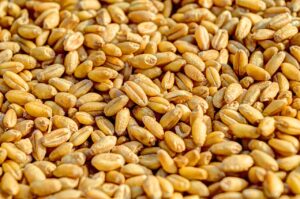Punjab Agricultural University develops new wheat variety to keep diabetes, obesity in check
The institution based in Ludhiana has played a significant role in India’s Green Revolution by developing high-yielding strains of foodgrains, leading to surplus production. Continuing its efforts, the institution has now developed a new variety of wheat with high amylose starch content. This variety is known to have potential health benefits, as it can help reduce the risks of type-2 diabetes and cardiovascular diseases.

The Punjab Agricultural University (PAU) in Ludhiana has shifted its research focus from “quantity” to “quality” and from “food security” to “nutritional security”. The institution played a crucial role in the Green Revolution, contributing to India’s surplus foodgrain production through the development of high-yielding strains. Recently, PAU has successfully bred a new wheat variety called PBW RS1, which has a high amylose starch content known to reduce the risks of type-2 diabetes and cardiovascular diseases.
Chapatis made from PBW RS1 wheat release glucose more slowly into the bloodstream, preventing a rapid rise in blood sugar levels. The high amylose and resistant starch content also increases satiety, meaning a person feels full after consuming fewer chapatis compared to regular wheat. While PBW RS1 has a similar total starch content to other wheat varieties (around 66-70%), it contains a significantly higher percentage of resistant starch (30.3%) compared to other varieties (7.5-10%).
PBW RS1 also exhibits a higher amylose content (56.63%) compared to other varieties (21-22%). Foods made from PBW RS1 whole grain flour, such as chapatis and biscuits, have a lower glycemic index, which is associated with decreased starch digestibility. This quality of PBW RS1 can help combat diet-related diseases like obesity and type-2 diabetes.
The development of PBW RS1 took a decade and involved combining five novel alleles affecting resistant starch levels. Previous varieties released by PAU focused on nutritional aspects, such as high zinc content and premium chapati quality, but none possessed the features of PBW RS1.
While PBW RS1 offers significant nutritional benefits, it has a drawback in terms of lower grain yield compared to other wheat varieties. Despite this challenge, the PAU vice-chancellor, Dr. Satbir Singh Gosal, emphasizes the importance of initiating nutritional security efforts and suggests promoting PBW RS1 flour as a product with high medicinal and nutritional value. By marketing it effectively, the wheat can fetch a higher price similar to premium basmati paddy.
PAU plans to provide seeds of the PBW RS1 variety to farmers in September for sowing during the upcoming rabi season. Besides its nutritional attributes, PBW RS1 exhibits complete resistance to yellow rust and moderate resistance to brown rust fungal diseases. The high amylose and resistant starch content of PBW RS1 also appeals to bakers and food processors, as it can enhance the fiber content of their products without the need for additional additives.
